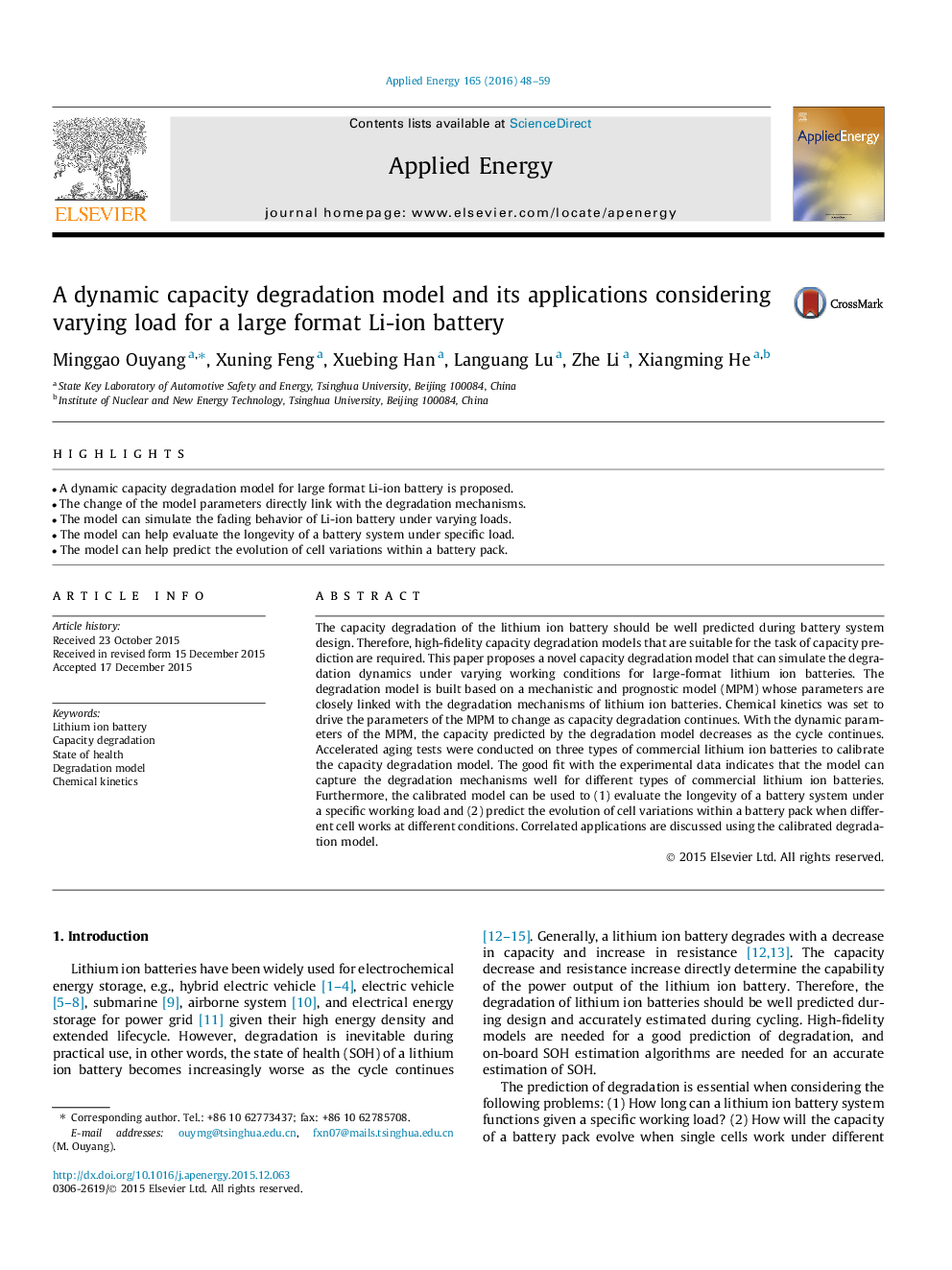| Article ID | Journal | Published Year | Pages | File Type |
|---|---|---|---|---|
| 6683906 | Applied Energy | 2016 | 12 Pages |
Abstract
The capacity degradation of the lithium ion battery should be well predicted during battery system design. Therefore, high-fidelity capacity degradation models that are suitable for the task of capacity prediction are required. This paper proposes a novel capacity degradation model that can simulate the degradation dynamics under varying working conditions for large-format lithium ion batteries. The degradation model is built based on a mechanistic and prognostic model (MPM) whose parameters are closely linked with the degradation mechanisms of lithium ion batteries. Chemical kinetics was set to drive the parameters of the MPM to change as capacity degradation continues. With the dynamic parameters of the MPM, the capacity predicted by the degradation model decreases as the cycle continues. Accelerated aging tests were conducted on three types of commercial lithium ion batteries to calibrate the capacity degradation model. The good fit with the experimental data indicates that the model can capture the degradation mechanisms well for different types of commercial lithium ion batteries. Furthermore, the calibrated model can be used to (1) evaluate the longevity of a battery system under a specific working load and (2) predict the evolution of cell variations within a battery pack when different cell works at different conditions. Correlated applications are discussed using the calibrated degradation model.
Related Topics
Physical Sciences and Engineering
Energy
Energy Engineering and Power Technology
Authors
Minggao Ouyang, Xuning Feng, Xuebing Han, Languang Lu, Zhe Li, Xiangming He,
